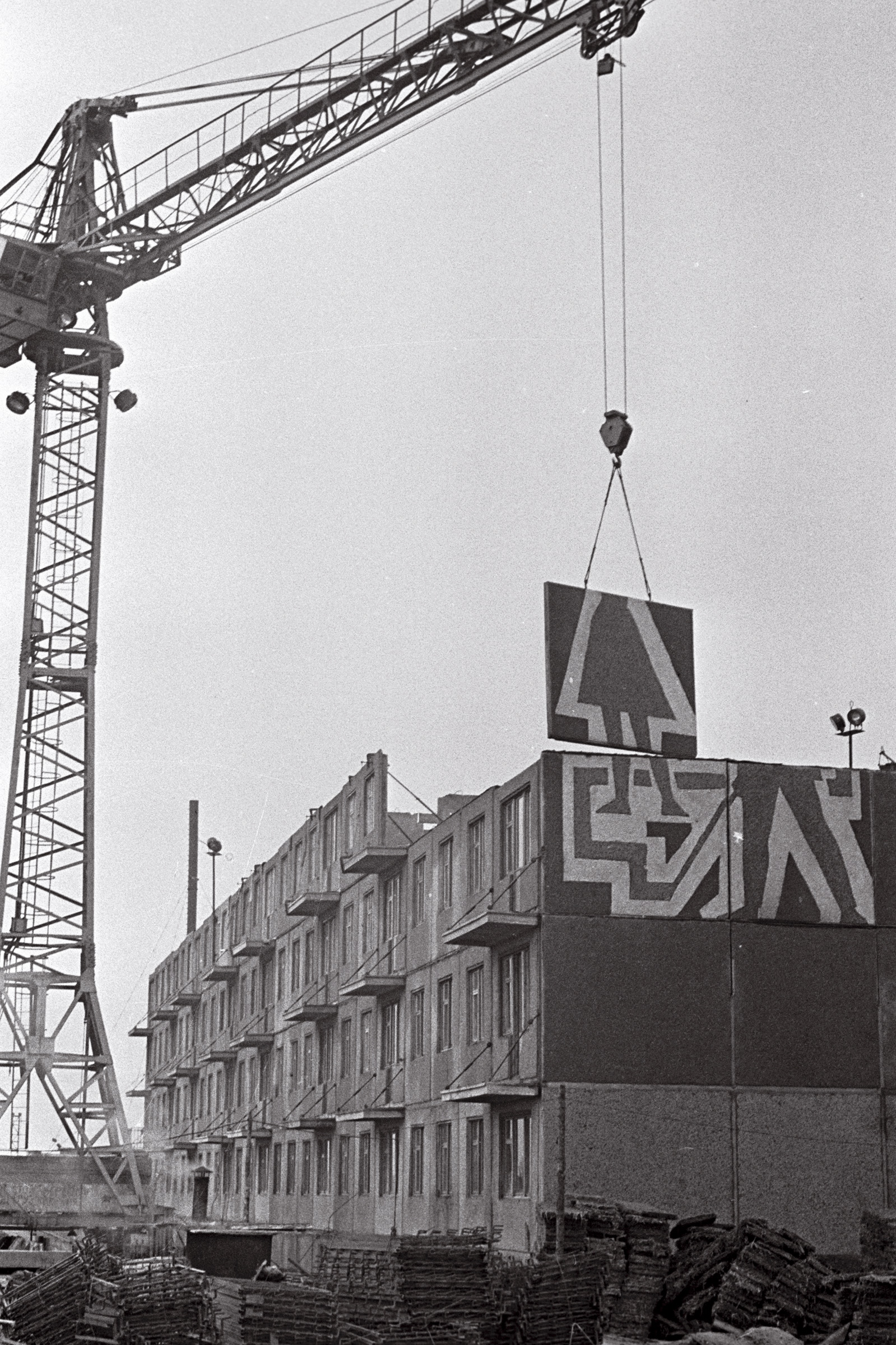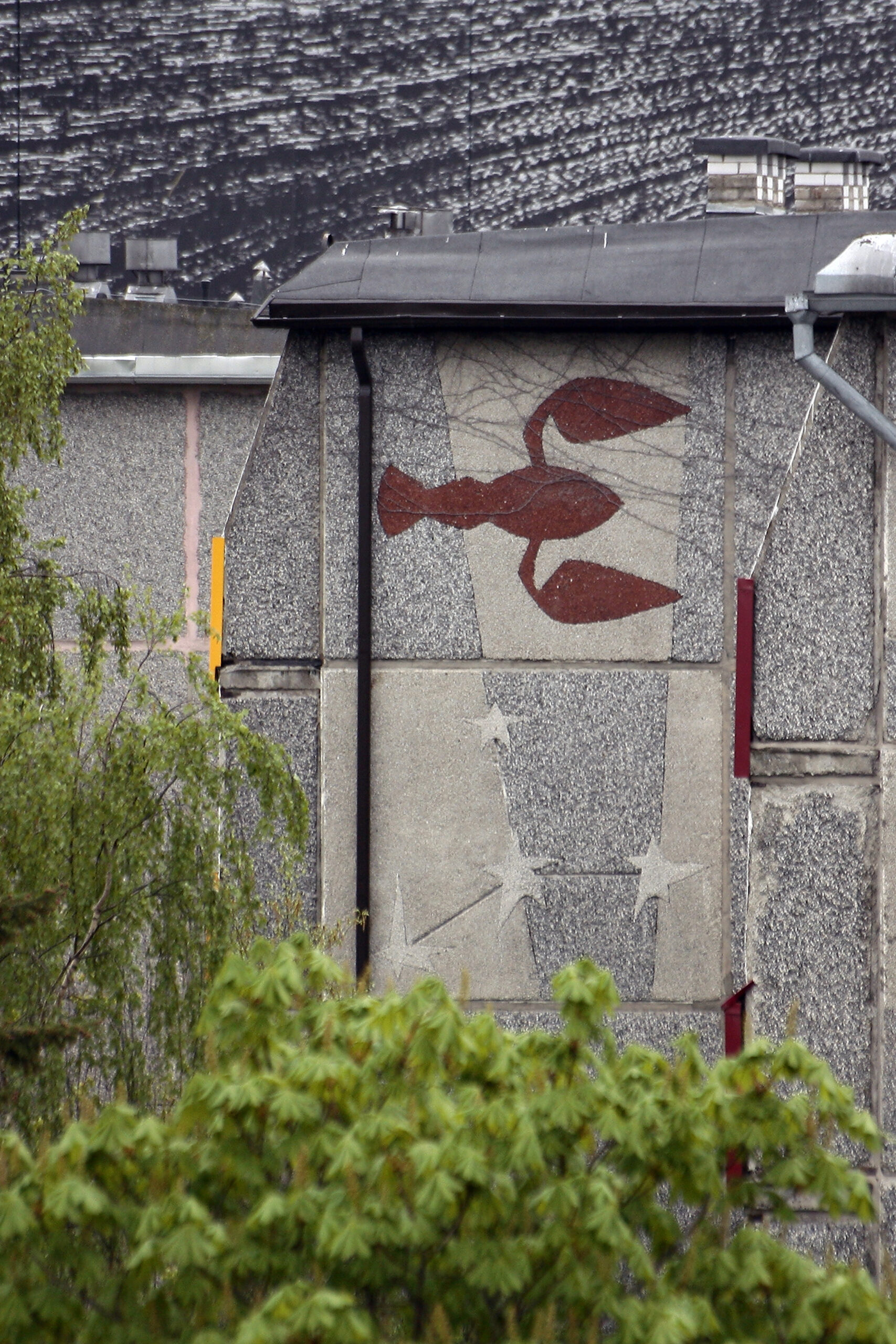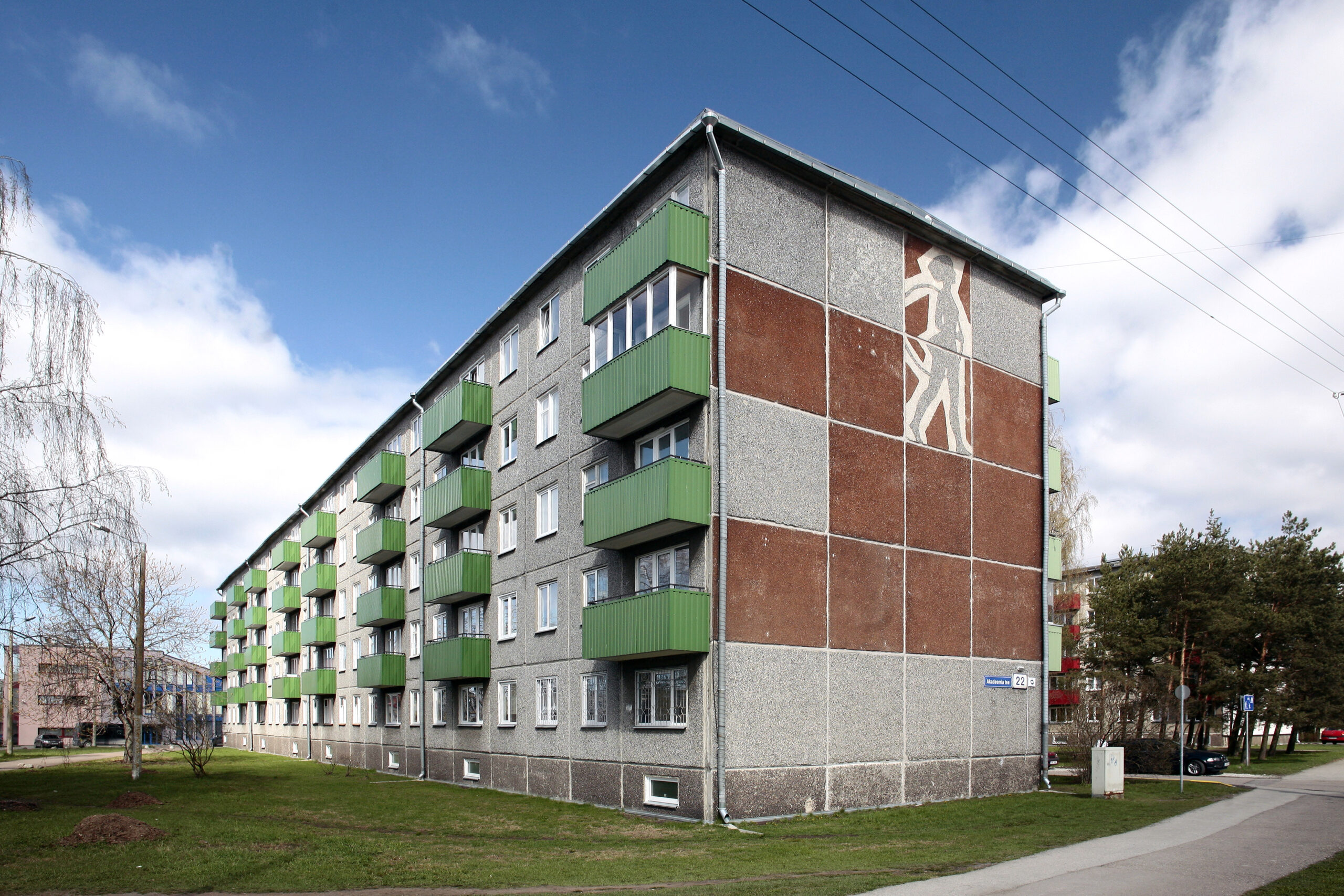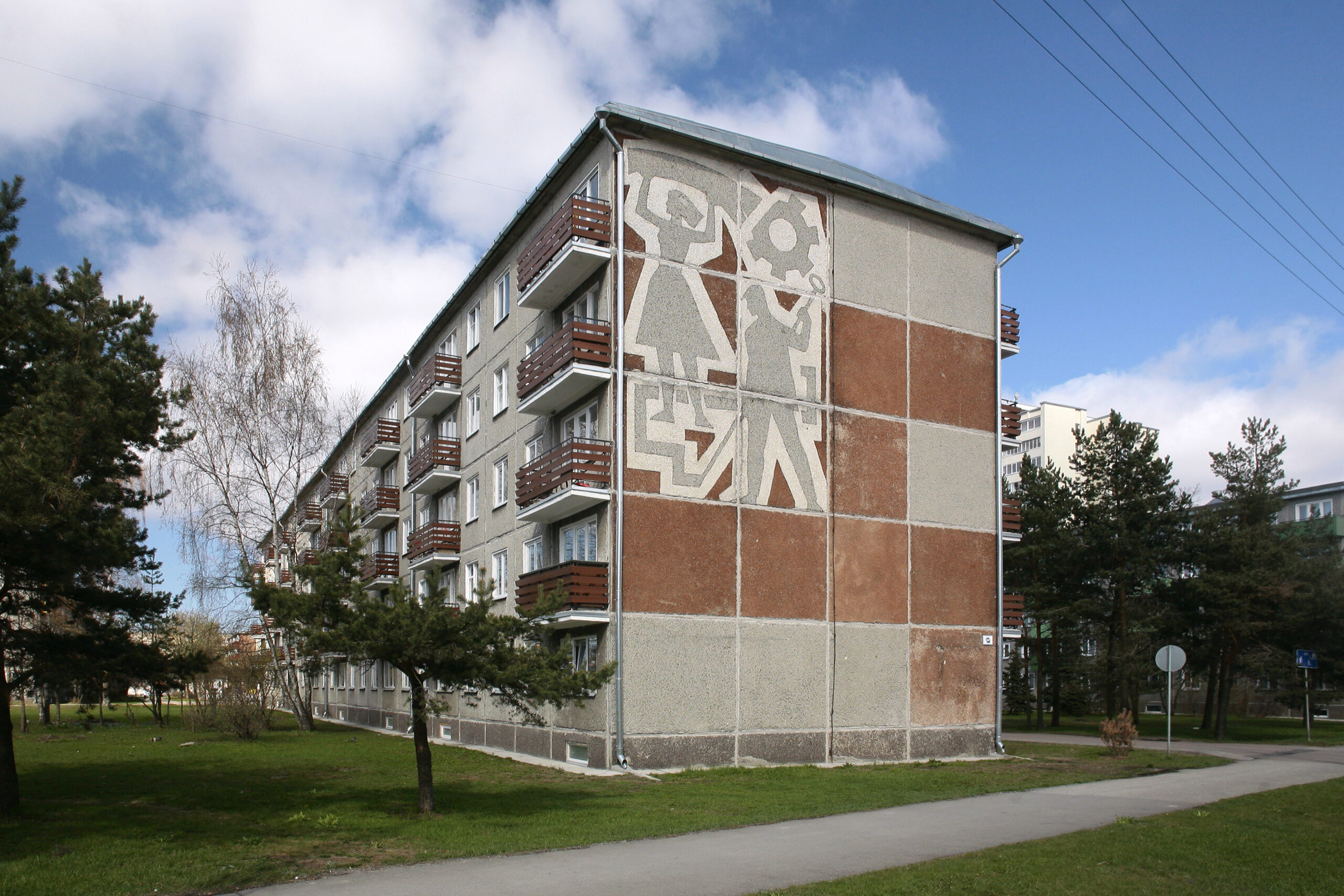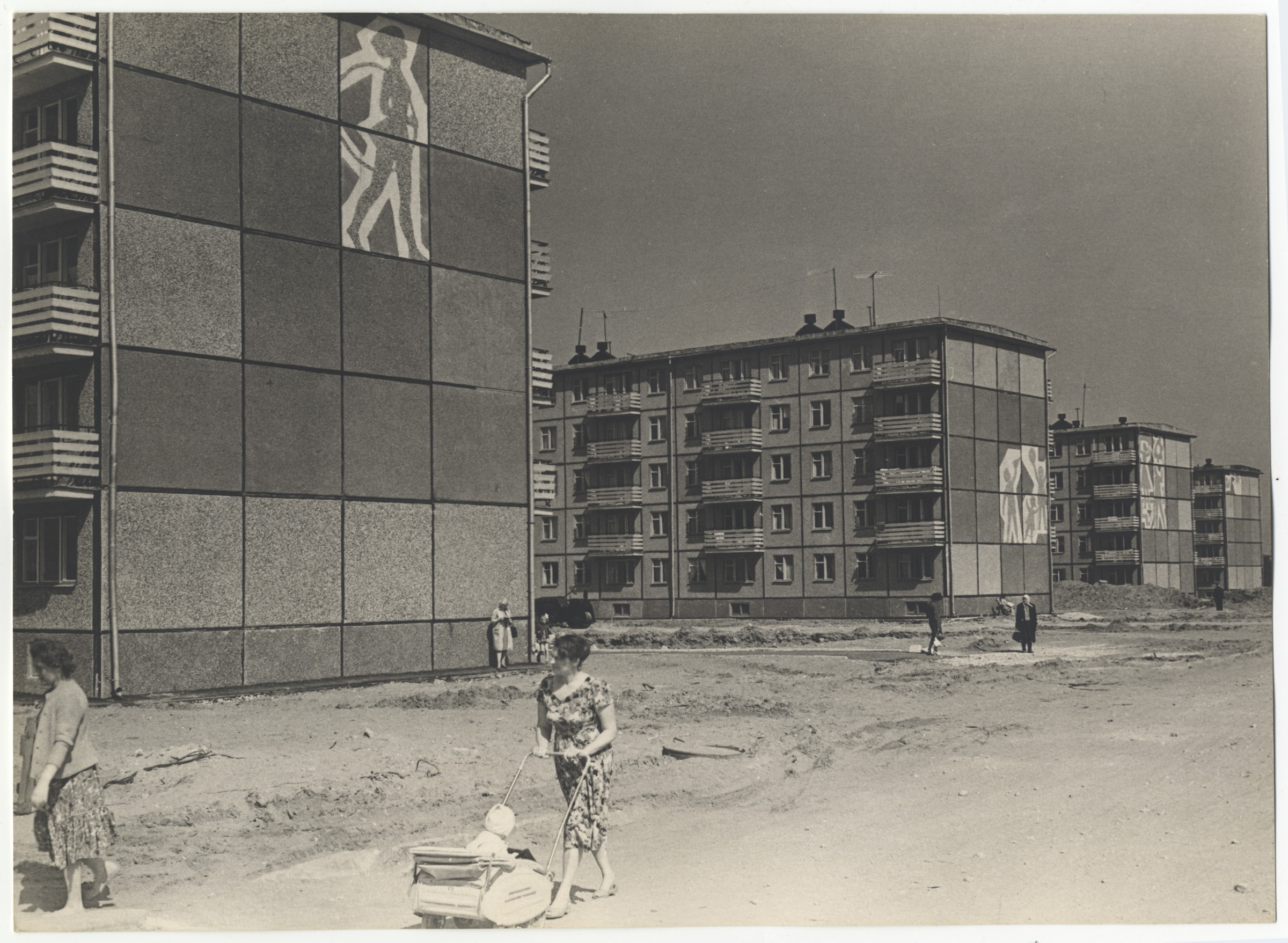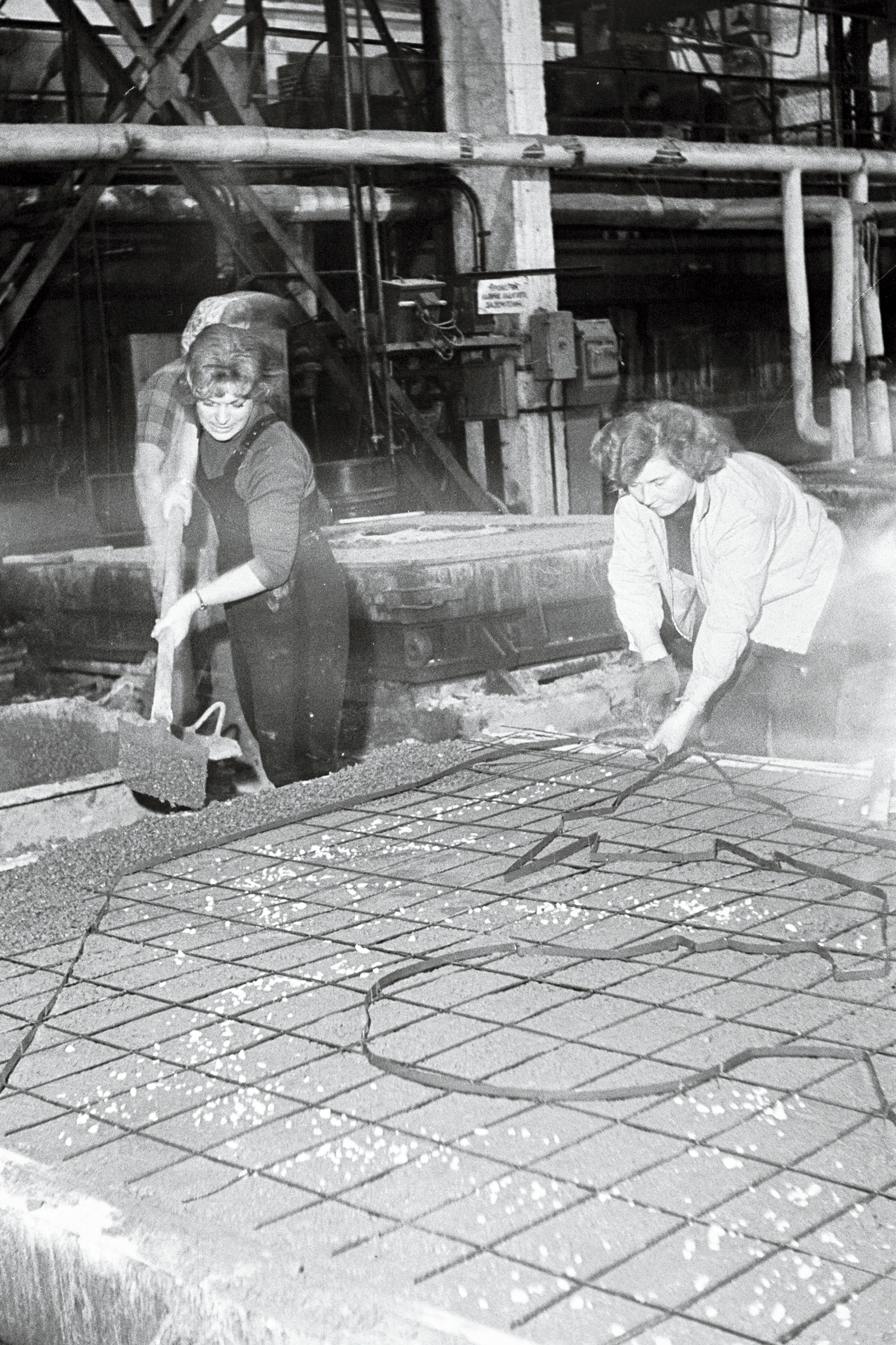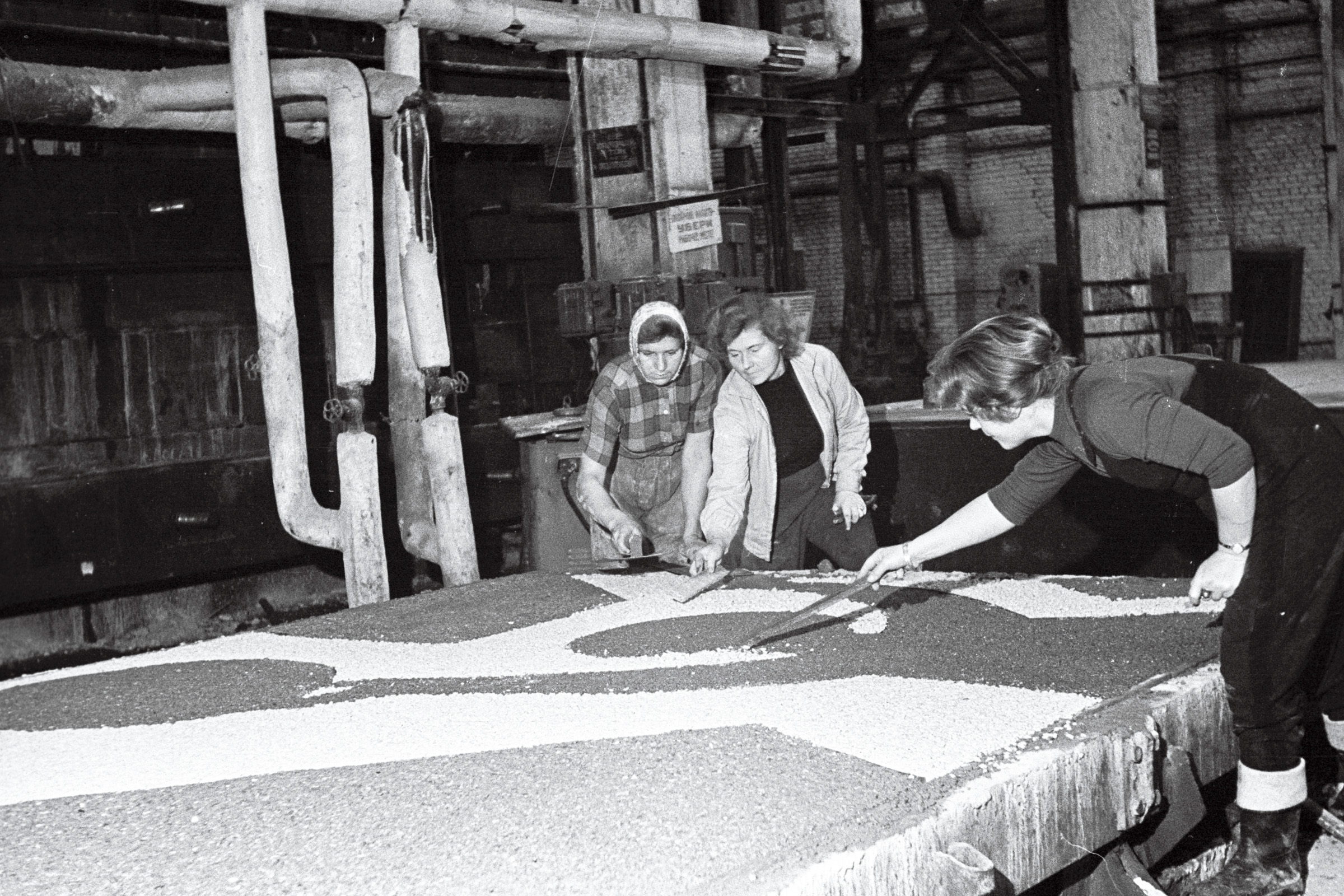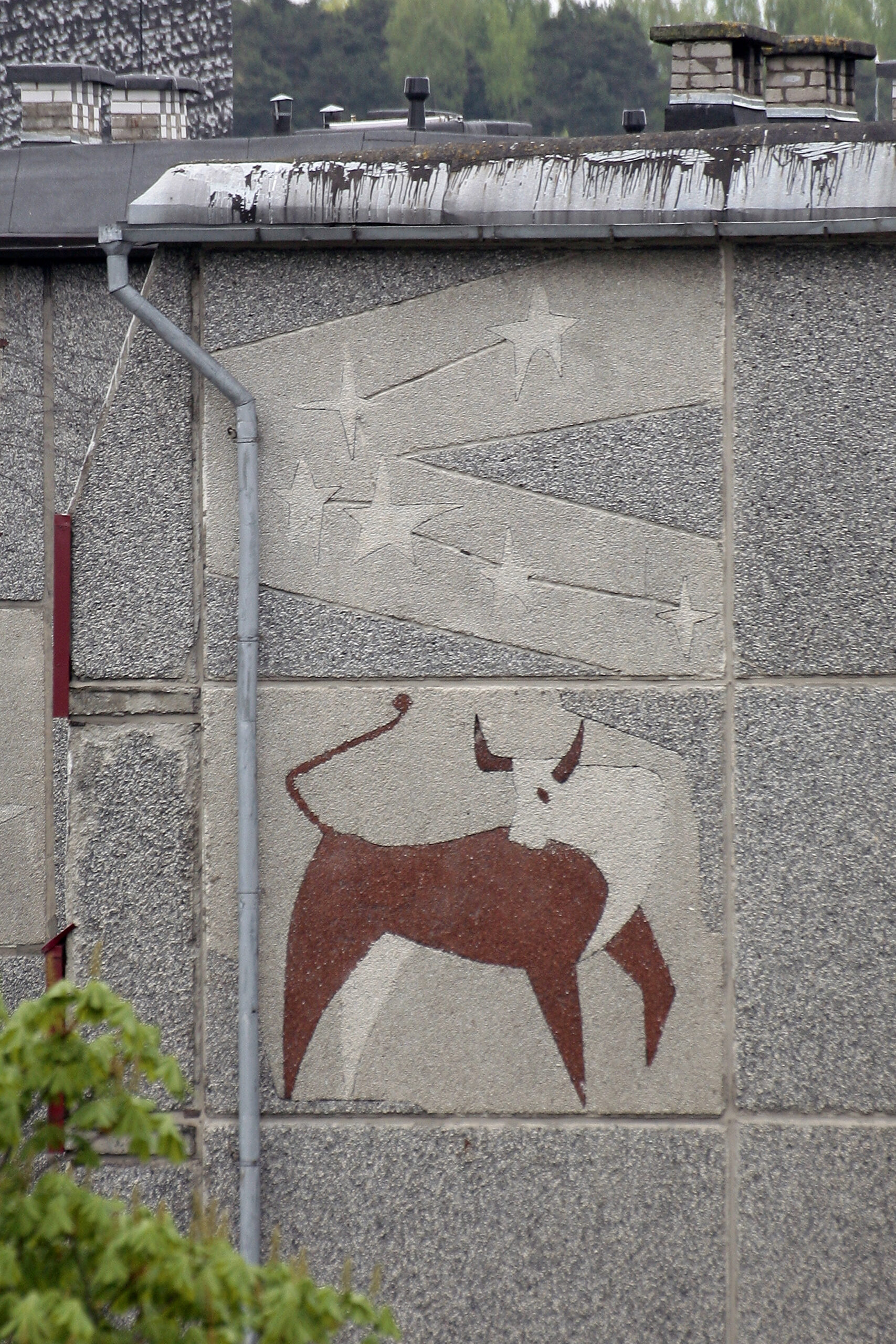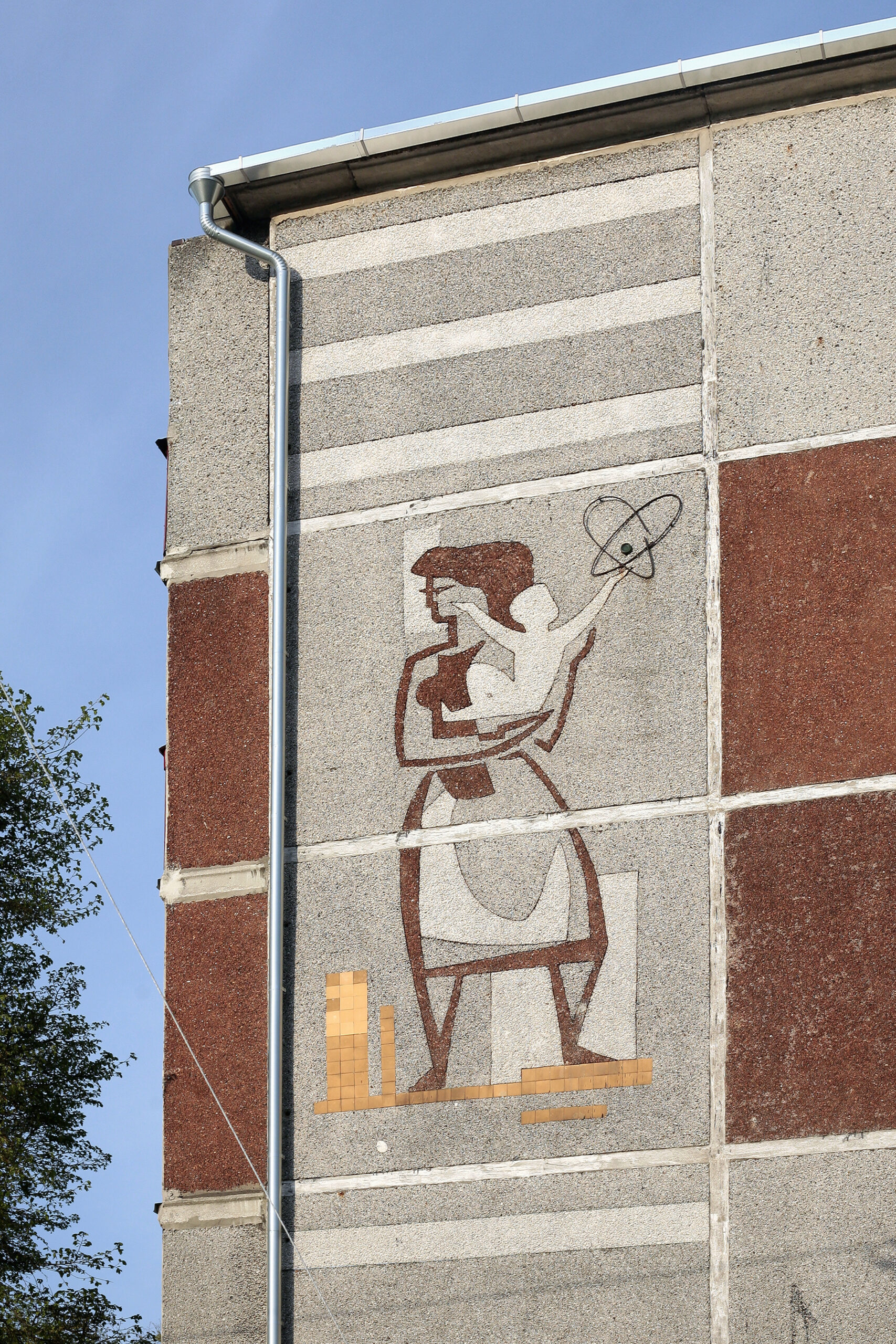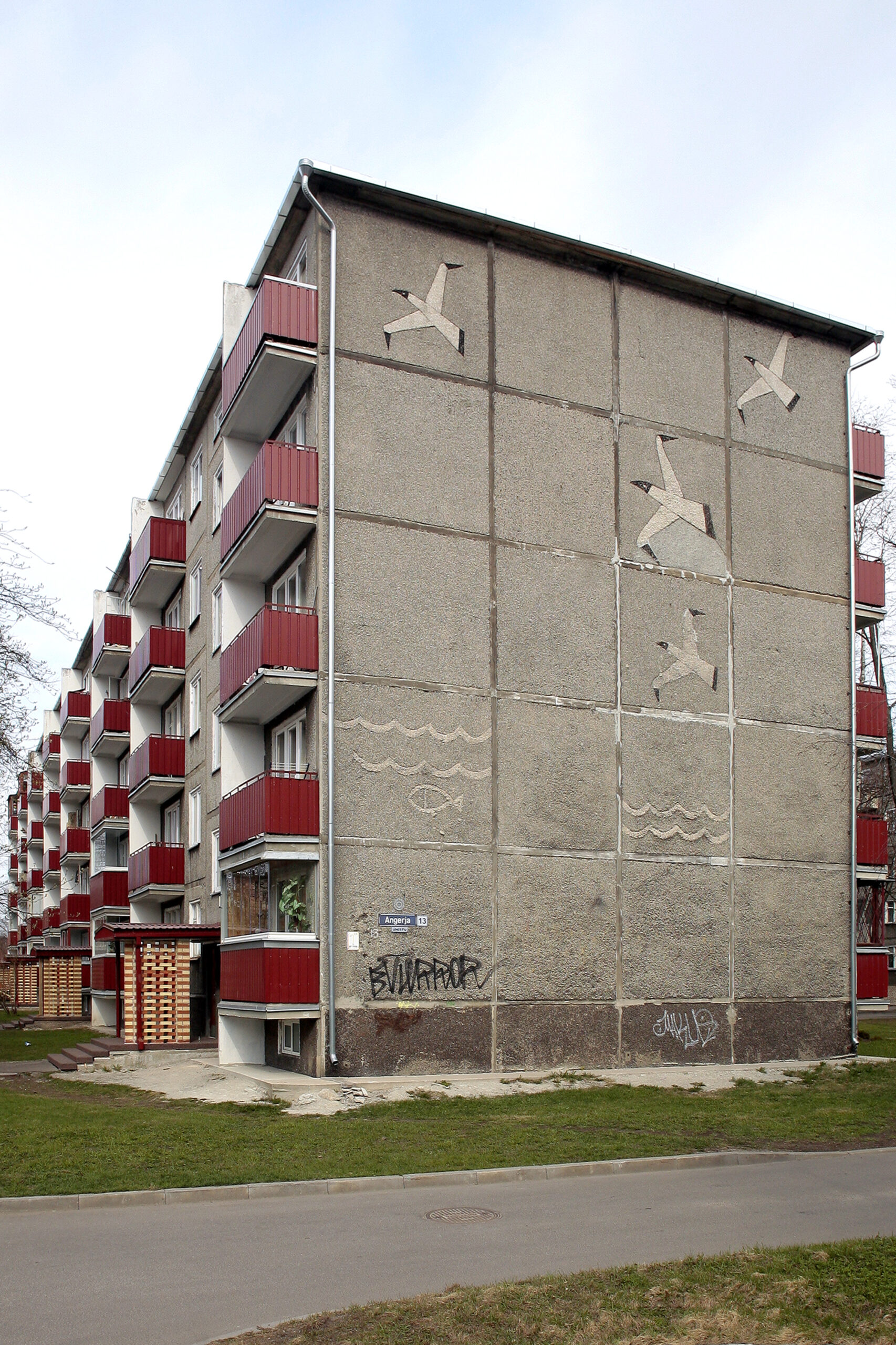Decorative Walls on Apartment Buildings
Year of completion: 1962, 1963
Address: Harju County, Tallinn, Akadeemia tee 4, 6, 14, 22; Ehitajate tee 15, 17, 19, 2; Karjamaa 6, 8
Known authors Enn Põldroos and Valli Lember-Bogatkina
Apartment building walls put together of decorative panels
Not listed as cultural monuments
In the beginning of the 1960s, a widespread construction of housing estates began in the Soviet Union. Hundreds of apartment buildings with necessary infrastructure were constructed under the aegis of a Socialist urban planning program. The microdistricts constructed with building panels were popularised through the image of the modern and mobile Soviet youth – the brand new living spaces with amenities were accompanied by shops, schools, restaurants, and healthcare establishments just within reach. Even the cramped kitchen in such an apartment only assured the rise in quality of life in the Soviet Union – the trendy citizen with a fast-paced lifestyle went out to eat and did not bother themselves with toiling in the kitchen anymore.
The first modern microdistrict in Estonia was Mustamäe, the construction of which began in 1961. At the same time, the Kalev Sports Hall was completed in Tallinn with a large-scale sgraffito on its façade, organised by urban architect of the time Dmitri Bruns. The successful art piece of the Sports Hall encouraged the consideration of a similar technique in Mustamäe, which was still in construction, although with complaints over monotony from critics. An exceptional technique next to the customary building panels was developed for the production of decorative panels for the windowless walls on the ends of the Mustamäe apartment buildings. Author of the Kalev Sports Hall’s sgraffito Valli Lember-Bogatkina drew designs after which the factory installed metal carcases onto the panels. The carcases were then filled with brick crumbs and colourful rubble. Many young artists were impressed by the idea of images laid out of panels. In addition to Bogatkina who spent numerous days in the construction factory with aquarellist friend Margareta Fuks, the venture also encouraged Enn Põldroos. Põldroos designed the end walls on apartment buildings on Ehitajate tee St. in Mustamäe and in the Karjamaa subdistrict in Põhja-Tallinn. There are two exceptional apartment buildings with decorative walls in Karjamaa, one of which displays a child reaching for a peaceful atom in its mother’s lap, designed by Põldroos, and the other displays Bogatkina’s gliding seagulls.
However, the drive to decorate panel buildings slowed down shortly and such a technique became a quite exceptional phenomenon in Estonia. All parties involved agreed that numerous decorated walls in public spaces would no longer have a refreshing effect, but rather a monotonous and burdensome one. Additionally, the production of special panels significantly slowed down the productivity of Tallinn Construction Factory, and hindered the construction of residential buildings. The decorative panels required more precise and diligent treatment than regular ones in order to match up the outlines of the image put together out of multiple panels. However, it was speed that was the foremost idea behind constructing out of the mass-produced panels in the first place.
The end-wall images quintessentially illustrate the optimism for future and pure geometric forms that dominated the 1960s. The figures created in accordance with the development of space-related accomplishments, technology, and nuclear energy, and the hopefulness aimed at new generations, have bravely stood the test of time. However, the pieces inevitably have to share the fate of the nearly 60-year-old apartment buildings of which they are a part. Thus, most of these wall decorations have by now disappeared under insulation materials.
Anu Soojärv







